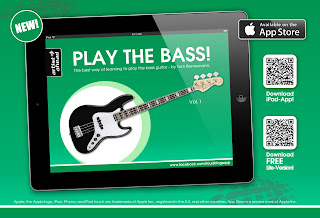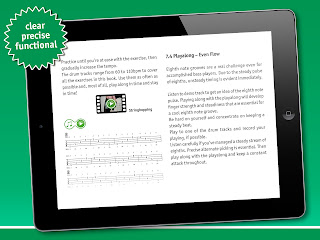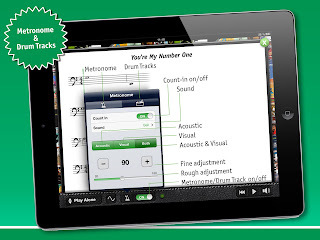| Fig. 1.1. Chord Progression with Slash Chords |
Understanding how to read these chords is fairly simple: the letter to the left of the slash is the type of chord (major, minor, seventh-chord etc.) and the note right of the slash is the bass note to be played with this chord.
G/D for example is a G major chord with the note D played in bass.
There are two different kinds of slash chords:
A) Slash chords with a bassnote that is contained in the overlying chord:
The G major triad is comprised of the three notes G, B and D. In G/D you play the note D as lowest tone. As D is part of the chord you call this a chord inversion, because you simply rearrange the notes of a given chord:
 |
| Fig. 1.2. Inversions of the g major chord |
B) Slash chords where the bassnote is not part of the overlying triad:
An example of this would be Em/D. The E minor triad contains the notes E, G and B, the bass note D is not part of the chord and thus an extra tone is added to the sound of the triad.
As you can see in Fig. 1.1 both kind of slash chords are included in the chord progression of “Higher and Higher”.
I picked out 3 songs to show you how and why slash chords are used.
There are in fact three compositional concepts of using slash chords.
1. Pedal tones
Repeating a single bass note over changing chords is called a pedal tone.
A good example for this is the bassline to the song “Feels Like The First Time” by Foreigner:
While the chords are changing from G to F to Am and back to G the Bass stays persistently on the G pedal tone.
The next slash chords concept is very similiar to pedal tones:
2. Ostinato basslines
An ostinato is little riff or melodic figure that is repeated over changing chords.
To exemplify this concept we take a look at the song “Under Pressure” by Queen.
The third concept featuring slash chords is called
3. Descending Bassline Progressions
Let’s look at the Intro of the Beatles classic “While My Guitar Gentle Weeps”:
In the first line of the Intro the chord progression Am - Am - D - F is smoothed out by the descending bassline-tones A-G-F#-F resulting in the slash chord progression Am - Am/G - D/F# - F.
In the verses of “Under Pressure” we also find a descending bassline:
In the verses of “Under Pressure” we also find a descending bassline:
Now here's the full transcriptions to all three songs:
I transcribed the album version of the song from Foreigner's debut from 1977. Note that the video shows the shorter single version, where the first 4 bars of the Bridge and the first 4 bars of the Interlude are omitted.
This song is almost entirely played with bass pedals. The verses and chorusses have a G pedal tone while the prechorus has A and B bass pedals.
You can find a harmonic analysis of that song here.
A harmonic analysis to this classic Beatles tune can be found here.
I hope you enjoyed this basslesson and if you have a question or request please email me at tom@four-strings.de
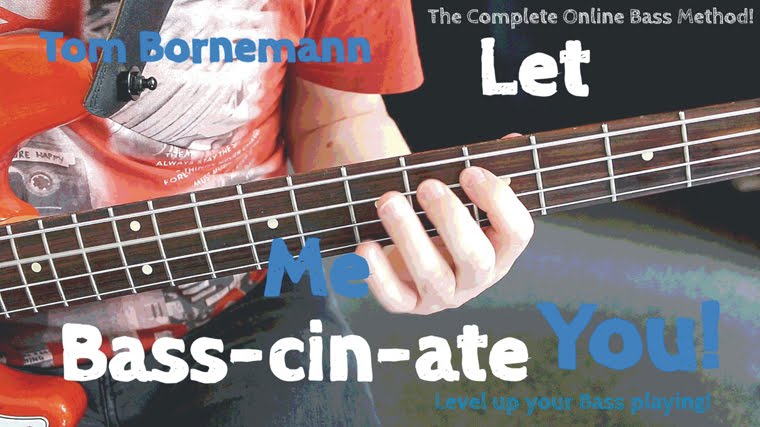
.gif)
.gif)
.gif)
.jpg)
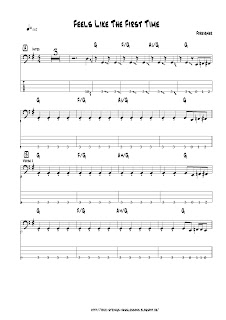
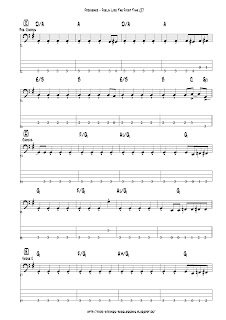







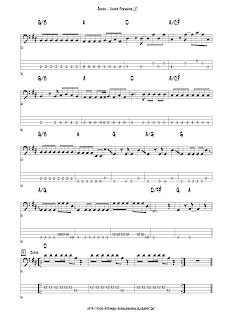


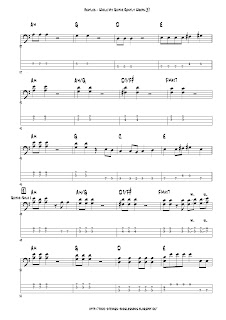

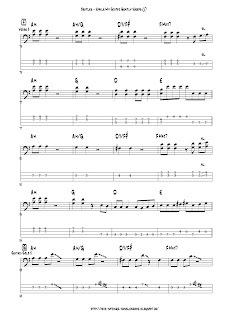

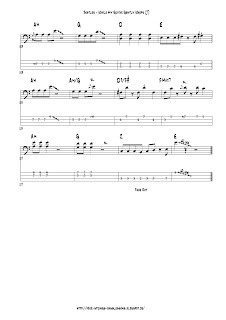

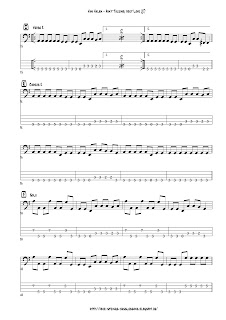

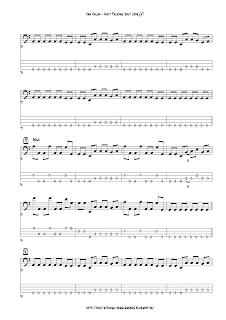








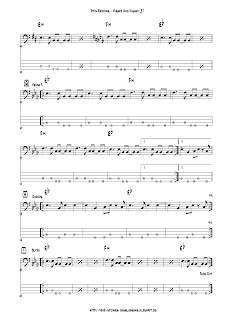

+Higher+and+Higher+1.gif)
+Higher+and+Higher+2.gif)
+Higher+and+Higher+3.gif)
